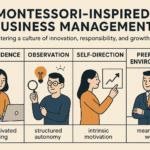
SPIN Selling: A Comprehensive Guide
SPIN Selling, a sales methodology developed by Neil Rackham, has become a cornerstone of modern sales techniques.
This approach emphasizes the importance of asking the right questions to uncover customer needs and drive sales.
By understanding the four types of questions—Situation, Problem, Implication, and Need-Payoff—salespeople can guide customers toward solutions that truly address their pain points.
Understanding the SPIN Model
The SPIN model is based on extensive research into the behaviors of successful salespeople.
Rackham found that the most effective salespeople asked a higher proportion of Situation, Problem, Implication, and Need-Payoff questions compared to less successful salespeople.
Situation Questions:
These questions gather basic information about the customer’s current situation. While important, they should be kept to a minimum to avoid wasting time.
Examples include “What is your current process for [task]?” or “How many employees are involved in [activity]?”
Problem Questions:
These questions uncover the customer’s pain points, challenges, or difficulties. They should be specific and focused on the customer’s needs.
Examples include “Are you satisfied with your current [product or service]?” or “What are the biggest challenges you face in [area]?”
Implication Questions:
These questions help the customer understand the consequences of their problems and how they might impact their business or personal life.
Examples include “How does this problem affect your productivity?” or “What is the cost of this issue in terms of lost revenue?”
Need-Payoff Questions:
These questions focus on the benefits that the customer will derive from a solution. They should be tied directly to the customer’s pain points.
Examples include “How would solving this problem improve your efficiency?” or “What would it mean to you if you could [achieve desired outcome]?”
The Importance of Asking the Right Questions
Asking the right questions is crucial for successful SPIN Selling. By focusing on Problem, Implication, and Need-Payoff questions, salespeople can:
Uncover hidden needs:
Customers may not always be aware of their underlying needs or how they can be addressed.
Build rapport:
By asking thoughtful questions, salespeople can demonstrate their interest in the customer’s needs and build trust.
Position solutions:
By understanding the customer’s pain points and desired outcomes, salespeople can position their solutions as the best fit for their needs.
Close more deals:
By addressing the customer’s specific needs and demonstrating the value of the solution, salespeople can increase their chances of closing deals.
Applying the SPIN Model
To effectively apply the SPIN model, salespeople should:
Prepare thoroughly:
Research the customer’s industry, company, and specific needs before the sales call.
Ask open-ended questions:
Avoid yes/no questions that limit the customer’s responses.
Listen actively:
Pay attention to the customer’s responses and ask follow-up questions to clarify their needs.
Tailor your approach:
Adapt your questioning style to the customer’s personality and communication style.
Use probing questions:
Ask questions that encourage the customer to think more deeply about their needs and challenges.
Case Study: A Successful SPIN Selling Application
Imagine a salesperson selling a new CRM software to a small business owner.
The salesperson begins by asking Situation questions to understand the company’s current sales process and challenges.
They then move on to Problem questions, asking about specific pain points such as lost leads, inefficient follow-ups, and difficulty tracking sales performance.
The salesperson then uses Implication questions to help the customer understand the consequences of these problems, such as lost revenue, decreased customer satisfaction, and missed opportunities.
Finally, they ask Need-Payoff questions to focus on the benefits of the CRM software, such as increased sales efficiency, improved customer relationships, and better data-driven decision-making.
By effectively applying the SPIN model, the salesperson can guide the customer toward a solution that addresses their specific needs and provides significant value.
The SPIN Model in a Modern Context
While the SPIN model was developed several decades ago, its principles remain relevant in today’s fast-paced and technology-driven sales environment.
Salespeople can adapt the SPIN model to incorporate modern sales techniques, such as social selling, content marketing, and sales automation.
Common Challenges and Solutions
Overusing Situation Questions:
While Situation questions are important for gathering basic information, salespeople should avoid spending too much time on them.
Focus on Problem, Implication, and Need-Payoff questions to uncover deeper needs.
Difficulty Asking Problem Questions:
Some salespeople may find it challenging to ask direct Problem questions.
Practice asking open-ended questions that encourage the customer to share their challenges.
Overlooking Implication Questions:
Implication questions are crucial for helping customers understand the consequences of their problems.
Make sure to ask follow-up questions to explore the potential negative impacts.
Not Linking Need-Payoff Questions to Problems:
Ensure that your Need-Payoff questions are directly tied to the customer’s specific pain points.
Overselling:
Avoid focusing too much on the features of your product or service. Instead, emphasize the benefits that the customer will derive from the solution.
Additional Tips for Successful SPIN Selling
Practice active listening: Pay close attention to the customer’s responses and show genuine interest in their needs.
Be patient: Allow the customer time to think and respond to your questions.
Be adaptable: Be prepared to adjust your approach based on the customer’s personality and communication style.
Continuously improve: Seek feedback from your customers and colleagues to identify areas for improvement.
The SPIN Selling model provides a powerful framework for salespeople to uncover customer needs, build rapport, and close more deals.
By focusing on asking the right questions, salespeople can demonstrate their expertise, establish trust, and position their solutions as the best fit for the customer’s requirements.
By mastering the SPIN model, salespeople can achieve greater success and build lasting relationships with their customers.
SPIN Selling: A Guide for B2B Salespeople
In today’s highly competitive business environment, mastering the art of sales is essential for B2B salespeople.
One method that has stood the test of time is SPIN Selling.
Developed by Neil Rackham in the 1980s, SPIN Selling is a research-based sales strategy that focuses on asking the right types of questions to uncover the needs of a prospect.
The method aims to shift the conversation from product features to how those features solve the customer’s specific pain points.
In a world where buyers are more informed and self-sufficient than ever, the SPIN Selling approach remains relevant because it emphasizes understanding and addressing the client’s unique challenges.
This article delves into what SPIN Selling is, its foundational concepts, its history, and practical ways to apply it in your sales process.
We’ll also explore how the method continues to evolve and what future trends might impact its application in B2B sales.
Key Definitions and Concepts
SPIN Selling is built around the idea that a salesperson should guide the conversation through four types of questions.
Each question type helps you understand the customer’s situation, challenges, and how your product or service can address those needs.
The acronym SPIN stands for:
Situation Questions
These questions are designed to gather factual information about the customer’s current situation.
They help you understand the context in which the customer is operating.
Example: “Can you tell me about the tools you’re currently using to manage your inventory?”
Problem Questions
Once you understand the situation, the next step is to ask questions that highlight the problems or pain points the customer is facing.
This helps you understand what is hindering their success. Example: “Are there any challenges with your current inventory management system?”
Implication Questions
After uncovering the problems, you ask implication questions to explore the consequences of those issues.
These questions are critical because they help the customer realize the urgency of addressing the problem.
Example: “How does this inventory issue affect your ability to fulfill customer orders on time?”
Need-Payoff Questions
The final step involves asking questions that help the customer envision the value of solving the problem.
These questions get the customer to articulate how your solution could benefit them, making it easier to close the deal.
Example: “If we could help you reduce those delays in inventory management, how would that impact your overall customer satisfaction?”
Together, these four types of questions form a powerful framework that helps salespeople move beyond superficial conversations and engage prospects on a deeper, more meaningful level.
Historical Background
SPIN Selling emerged from one of the largest studies ever conducted on sales performance.
Neil Rackham and his team at Huthwaite, Inc., analyzed over 35,000 sales calls across various industries.
They found that traditional sales methods, which focused heavily on pushing product features and closing tactics, were less effective in complex B2B sales environments.
The research showed that successful salespeople were those who asked insightful questions and helped customers connect the dots between their problems and the offered solutions.
Based on these findings, Rackham developed the SPIN Selling framework, which emphasized a consultative approach rather than a hard-sell tactic.
When the SPIN Selling book was first published in 1988, it was revolutionary because it moved away from the pressure-filled techniques of traditional selling, offering a method grounded in empathy and understanding.
Since then, it has been widely adopted by sales teams worldwide and remains a cornerstone of B2B sales training.
Core Arguments for SPIN Selling
The primary argument for SPIN Selling is that it shifts the focus from the salesperson’s product to the customer’s needs.
In B2B sales, the decision-making process is often lengthy and involves multiple stakeholders.
Traditional selling methods, which focus on features and benefits, often fail to resonate because they don’t address the complex nature of B2B purchasing decisions.
By using SPIN, salespeople can build a relationship with the customer based on trust and mutual understanding.
The method enables sales professionals to act as problem solvers rather than pushy sellers, making it easier to close deals, especially for high-value, complex products and services.
Benefits of SPIN Selling
Long-Term Relationships
SPIN Selling is about fostering trust by truly understanding the customer’s business needs.
This helps build long-term relationships, which are crucial in B2B sales where repeat business and contracts are key to success.
Higher Close Rates
By identifying and addressing the customer’s pain points, SPIN Selling increases the likelihood of closing the deal.
When customers feel that their concerns are being understood and addressed, they are more inclined to make a purchase.
Adaptability
The SPIN Selling method is versatile. It can be used across industries and is effective for selling everything from software solutions to heavy machinery.
Its focus on customer needs makes it a universal approach.
Challenges of SPIN Selling
While SPIN Selling has many advantages, it is not without its challenges. For one, it requires a high level of skill in asking questions.
A salesperson must know how to guide the conversation without making the customer feel interrogated. Another challenge is that SPIN Selling can be time-consuming.
Since the method is built on building trust and understanding, it may take longer to close deals compared to more aggressive selling methods.
Moreover, in some fast-paced sales environments, the emphasis on probing with questions might not align with the speed of decision-making that some businesses require.
In those cases, blending SPIN with other approaches might be more effective.
Trends in SPIN Selling
In recent years, SPIN Selling has seen a resurgence in popularity due to the increasing complexity of B2B sales and the rise of consultative selling.
In today’s digital age, customers have access to vast amounts of information before they even engage with a salesperson.
As a result, sales professionals must provide more value in their interactions.
Another trend impacting SPIN Selling is the rise of data-driven selling.
Sales teams now have access to analytics tools that provide deeper insights into customer behavior and needs.
This allows salespeople to ask more targeted Situation and Problem questions, making the SPIN method even more effective.
Practical Applications
Applying SPIN Selling in practice involves honing your questioning techniques and developing the ability to listen actively.
Here are some practical ways B2B salespeople can incorporate SPIN into their daily sales process:
Preparation is Key
Before engaging with a prospect, do your homework. Research their company, industry, and any recent challenges they may be facing.
This will help you ask relevant Situation and Problem questions from the start.
Use a Question Funnel
Start broad with Situation questions to understand the customer’s context, then narrow down with Problem and Implication questions to uncover their pain points.
Finally, use Need-Payoff questions to guide them toward seeing the value of your solution.
Practice Active Listening
SPIN Selling isn’t just about asking questions; it’s about listening to the answers and responding thoughtfully.
When a prospect discusses a challenge, follow up with additional questions that delve deeper into the issue.
This not only shows that you’re paying attention but also helps uncover more actionable information.
Focus on Solutions, Not Products
In B2B sales, prospects are often not interested in the product itself but in how it can solve their problems.
Always link your product’s features back to the specific challenges your customer is facing, as uncovered through your SPIN questions.
Tailor Your Approach
SPIN Selling is not a one-size-fits-all method.
Customize your questions and your overall approach based on the industry, size, and nature of the business you’re selling to.
Real-Life Case Studies
A software company struggling with long sales cycles implemented SPIN Selling as part of its sales process.
By focusing on asking Problem and Implication questions, the sales team was able to identify key pain points around data security and compliance, which had not been previously addressed.
As a result, they positioned their software as a solution to these specific challenges, shortening the sales cycle and increasing their close rate by 15%.
Similarly, a B2B services firm used SPIN Selling to enter new markets.
By using Situation and Problem questions, they uncovered common issues their target audience faced, such as inefficiencies in operations.
By addressing these concerns and guiding the prospects through Need-Payoff questions, they were able to establish themselves as a trusted partner and expand their market share.
Future Trends
As technology continues to evolve, SPIN Selling will likely be integrated with more advanced sales tools and platforms.
Artificial intelligence (AI) is already beginning to assist sales teams by providing insights into customer needs and suggesting the right questions to ask.
This could enhance the SPIN Selling process by giving salespeople even more precise data to work with.
Additionally, virtual selling is becoming more prominent, and salespeople will need to adapt SPIN Selling to digital communication platforms.
The core principles remain the same, but sales professionals must now learn how to build trust and uncover needs through virtual meetings, chat, and email.
SPIN Selling remains one of the most effective sales methodologies for B2B sales professionals.
Its emphasis on understanding the customer’s needs and solving their problems makes it particularly suited to today’s complex and consultative sales environment.
By mastering the SPIN questions, salespeople can build stronger relationships, increase their close rates, and provide genuine value to their customers.
While there are challenges to implementing SPIN Selling, such as the need for skilled questioning and active listening, the rewards are significant.
As B2B sales continue to evolve with technological advancements and changes in buyer behavior, SPIN Selling will likely remain a valuable tool for sales professionals aiming to succeed in an increasingly competitive market.
















